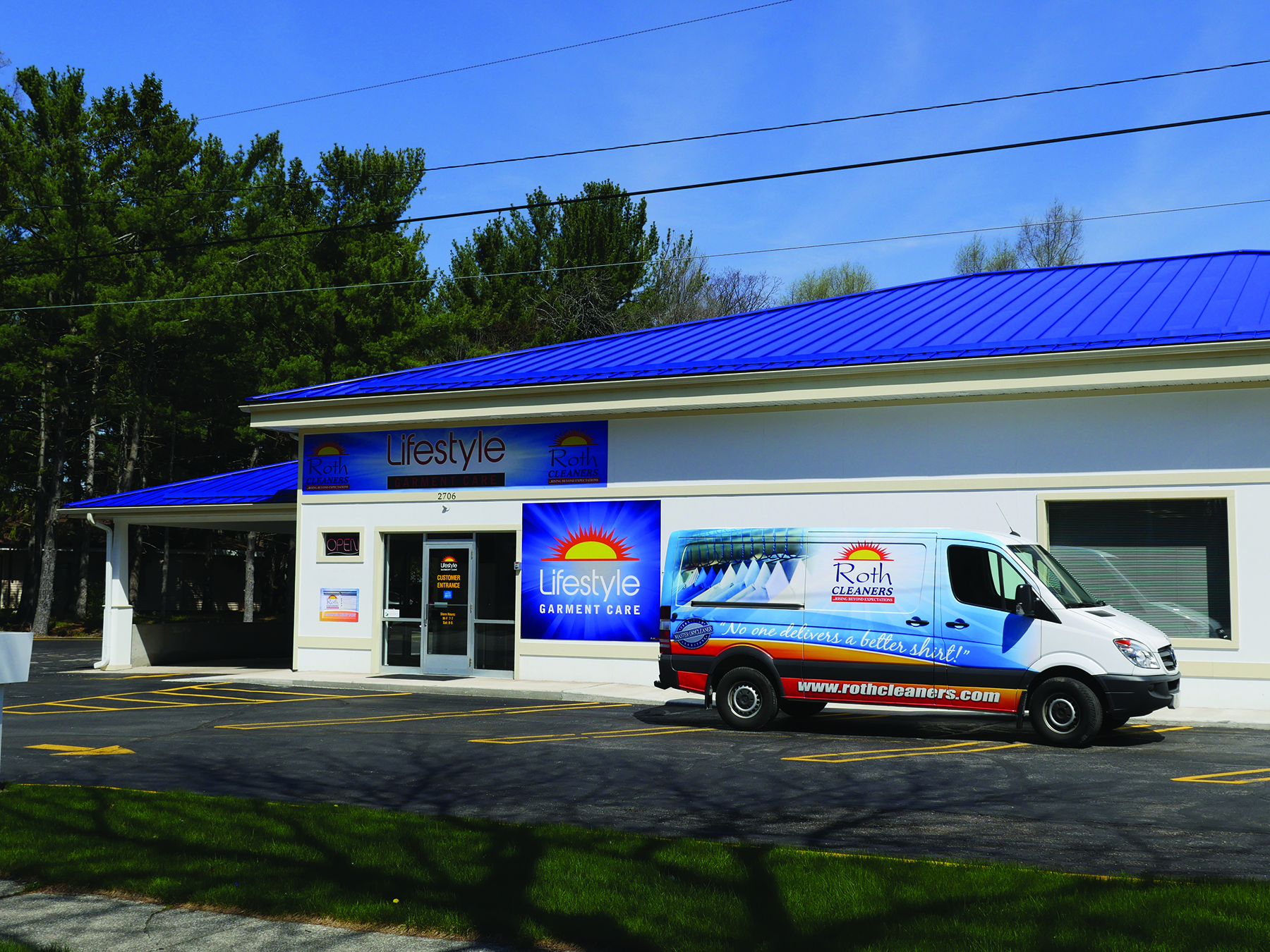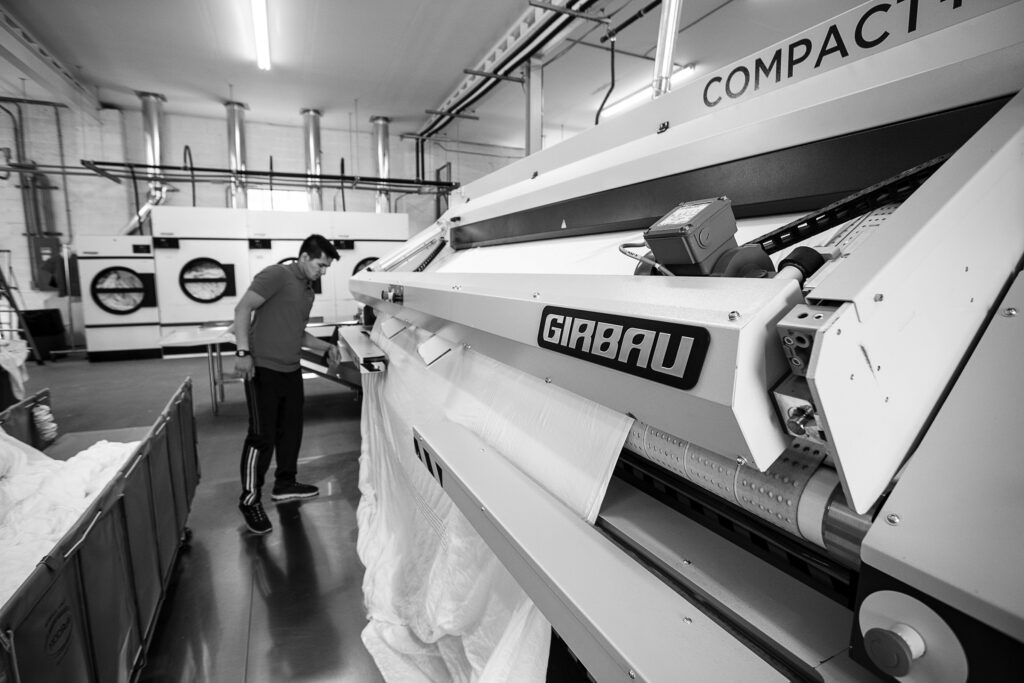Progressive operators are cashing in on one of the hottest growing revenue streams in textile care — residential wash/dry/fold (WDF). Key to growing this sector, and boosting revenue, is to go beyond over-the-counter WDF sales to also established pick-up and delivery routes. The first goal is to convert existing over-the-counter sales to pick-up and delivery sales. Then expand to new customers. Finally, with the right equipment, pursue residential flatwork and commercial accounts for maximized revenue. In this article, I’ll offer suggestions for capitalizing on these growing revenue streams …
Route Software
Before initiating a residential route, do your homework. Invest in a route software program or platform that allows online ordering and facilitates easy route management, tracking, reporting and payment processing. There are several good options on the market.
For operators already running dry cleaning routes, it’s simple to expand services to include WDF and flatwork. Some operators have established stops from which they don’t vary, regardless of whether there is a pick-up or not; others do on-demand only when the customer requests service. Both solutions work, but on-demand is more cost effective because it conserves operating costs like labor, gasoline, time, etc.
Pricing
When it comes to pricing, several options or some combination of options work well, including cost-per-pound, subscription and by-the-bag. The problem with traditional cost-per-pound is that sometimes customers don’t have a clue what they are spending until after delivery. Thus, they might shy away from using your service. Another way of pricing is by subscription where a customer is committed to a specific dollar/bag/poundage amount every week/month. Their credit card is automatically charged for that set amount whether anything is picked up and processed.
Finally, there’s by-the-bag. I know an operator — Sheldon Cleaners, in Kentwood, Mich. — that is extremely successful charging by-the-bag. Most customers enjoy knowing up-front what they are spending. Sheldon Cleaners offers three different sized laundry bags, at $25, $35 and $50 per bag, with some households asking for multiple bags.
Equipment Needs
Before launching a route, it’s smart to consider your goals and the types of services you’ll offer because each step to higher service requires different machinery. Check out my recommendations:
- Step one is to serve route WDF residential customers only. In this scenario you’re washing mostly clothing, towels, blankets and sheets, which can all be processed in a standard commercial washer and dryer with basic programming. The problem many dry cleaners run into is that they only have one washer and dryer for processing all laundry. Oftentimes it’s necessary to add to that lineup with larger capacities or multiple pockets for processing more laundry pounds. The 35-pound capacity commercial machines, like the LG Titan Pro, work well for this level of service. Your equipment distributor is a great resource for assisting you with appropriate machine sizing.
- Step two is to serve route WDF customers and iron their flatwork sheets, duvets and tablecloths at a premium price. To do this, you
can hand iron or use a hot-head press at huge labor costs. The other option is to invest in a flatwork ironer that also has folding capability like the Poseidon 125-inch (length) model. Most flatwork will run through this size ironer without first folding items in half, including king sheets. Only 136-inch rounds require the pre-fold.If you plan to expand into commercial work for catering companies, small hotels, spas or vacation rentals, an ironer is also essential. So, think ahead. The good news is some only require a 200-square-foot space for installation and operation.Royalty Cleaners, in Royal Oak, Mich., invested in a Poseidon 125-inch ironer because it took them 5-15 minutes to iron one sheet using a hot-head press. Now it takes 20 seconds. The ironer paid for itself in a year and launched the residential flatwork side of their business to make up 20 percent of total revenue. Now, that’s their most profitable business segment.
- Step three is to serve commercial accounts, including spas, vacation rentals, small hotels, moving companies and catering companies. To do this well and to properly remove oils and stains, a highly programmable commercial washer(s) and flatwork ironer are a must. The washer should offer larger capacities, higher water temperature options, automatic chemical injection and variable rinses, baths, soaks, water levels, mechanical action and extract speeds. There are also machines on the market with 10-inch touchscreens and corner indicator lights, like the Continental Girbau Genius Series, that illuminate in different colors depending on the status of the load.
When selecting a flatwork ironer, be sure it irons sheets, duvets and table linens directly from the washer while still damp. It should dry, iron and partially fold goods in one automated step. This improves production, saves labor time and helps eliminate dryer bottlenecks.
Step 3 also demands a commercial, programmable dryer with moisture sensing to prevent over-drying.
Build Your Own Success
With the right tools and equipment, the sky’s the limit. I know several operators who’ve successfully created multiple revenue streams using the techniques described above, including Peerless Cleaners, in Fort Wayne, Ind.; Huntington Cleaners, in Huntington Woods, Mich.; and Perfect Cleaners, in Detroit. Today, these operators not only enjoy amped revenue, they capitalize on business from an array of accounts, including military bases, casinos and medical offices.


 can hand iron or use a hot-head press at huge labor costs. The other option is to invest in a flatwork ironer that also has folding capability like the Poseidon 125-inch (length) model. Most flatwork will run through this size ironer without first folding items in half, including king sheets. Only 136-inch rounds require the pre-fold.If you plan to expand into commercial work for catering companies, small hotels, spas or vacation rentals, an ironer is also essential. So, think ahead. The good news is some only require a 200-square-foot space for installation and operation.Royalty Cleaners, in Royal Oak, Mich., invested in a Poseidon 125-inch ironer because it took them 5-15 minutes to iron one sheet using a hot-head press. Now it takes 20 seconds. The ironer paid for itself in a year and launched the residential flatwork side of their business to make up 20 percent of total revenue. Now, that’s their most profitable business segment.
can hand iron or use a hot-head press at huge labor costs. The other option is to invest in a flatwork ironer that also has folding capability like the Poseidon 125-inch (length) model. Most flatwork will run through this size ironer without first folding items in half, including king sheets. Only 136-inch rounds require the pre-fold.If you plan to expand into commercial work for catering companies, small hotels, spas or vacation rentals, an ironer is also essential. So, think ahead. The good news is some only require a 200-square-foot space for installation and operation.Royalty Cleaners, in Royal Oak, Mich., invested in a Poseidon 125-inch ironer because it took them 5-15 minutes to iron one sheet using a hot-head press. Now it takes 20 seconds. The ironer paid for itself in a year and launched the residential flatwork side of their business to make up 20 percent of total revenue. Now, that’s their most profitable business segment.